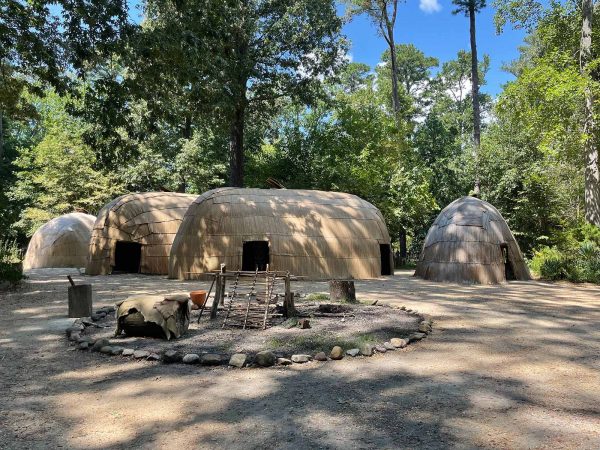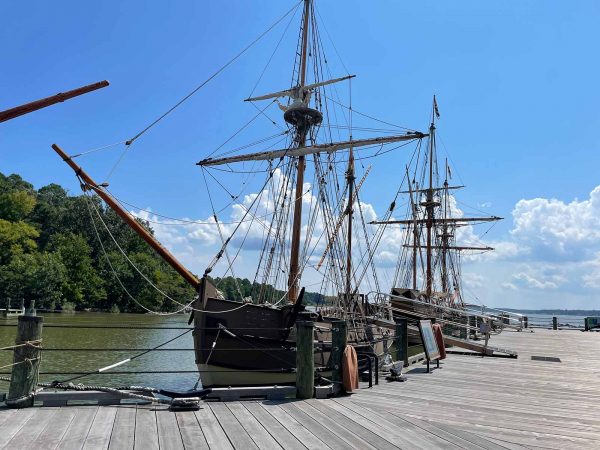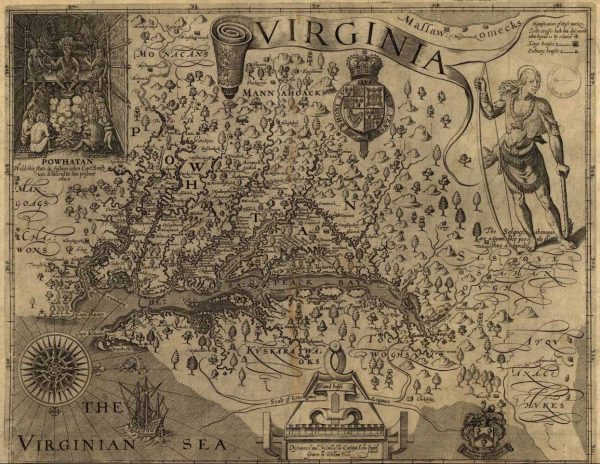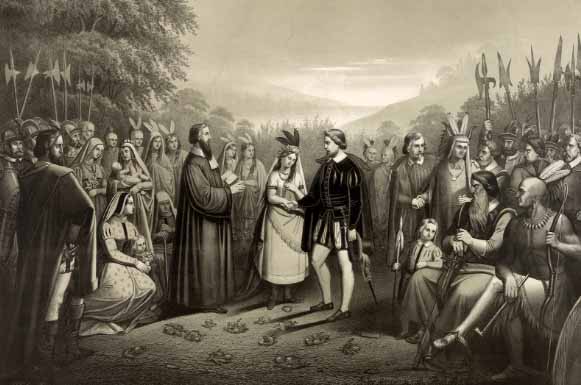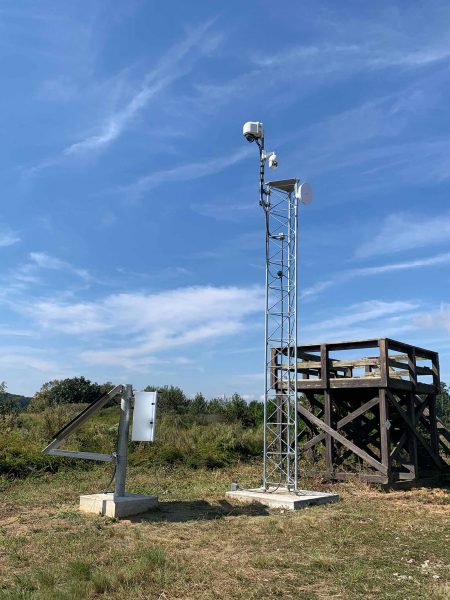The prominent peninsula now known as Hog Island has long been a gathering spot for both wildlife and people, and the area has a rich colonial history steeped with ties to the founding of our nation. Today, the WMA is known for its scenic views of the James River and the large number of waterfowl and other birds that visit the site throughout the year.
The 3,908 acre Hog Island Wildlife Management Area consists of three tracts: the original Hog Island Waterfowl Refuge directly on the James River at the end of the peninsula, the Carlisle Tract on the peninsula’s east side, and the Stewart Tract which is also east of the peninsula across Lawnes Creek in Isle of Wight County.
References Cited
- 1 091-5026 Cactus Hill Archaeological Site. (2022, July 29). Virginia Department of Historic Resources. Retrieved August 15, 2022, from https://www.dhr.virginia.gov/historic-registers/091-5026/
- 2 Biography.com Editors. (2021, March 30). Powhatan. Biography. Retrieved August 16, 2022, from https://www.biography.com/political-figure/powhatan
- 3 Captain John Smith - Historic Jamestowne Part of Colonial National Historical Park (U.S. National Park Service). (2015, February 26). National Park Service. Retrieved July 28, 2022, from https://www.nps.gov/jame/learn/historyculture/life-of-john-smith.htm
- 4 Chief Powhatan | Historic Jamestowne. (2021). Jamestown Rediscovery. Retrieved August 16, 2022, from https://historicjamestowne.org/history/chief-powhatan/
- 5 Chronology of Powhatan Indian Activity - Historic Jamestowne Part of Colonial National Historical Park (U.S. National Park Service). (2020, August 24). National Park Service. Retrieved August 16, 2022, from https://www.nps.gov/jame/learn/historyculture/chronology-of-powhatan-indian-activity.htm#:%7E:text=1980s%20%2D%20By%20the%20end%20of,Chickahominy%2C%20Nansemond%2C%20and%20the%20Rappahannock
- 6 DeChard, S. & Stantec Consulting Services, Inc. (2017, July). Hog Island Wildlife Management Area Written Historical and Descriptive Data. Historic American Landscapes Survey- National Park Service. https://tile.loc.gov/storage-services/master/pnp/habshaer/va/va2200/va2288/data/va2288data.pdf
- 7 History.com Editors. (2022, April 4). Pocahontas marries John Rolfe. HISTORY. Retrieved July 28, 2022, from https://www.history.com/this-day-in-history/pocahontas-marries-john-rolfe
- 8 Hog Island Wildlife Management Area. (2022). The Cultural Landscape Foundation. Retrieved August 17, 2022, from https://www.tclf.org/hog-island-wildlife-management-area
- 9 John Smith | Historic Jamestowne. (2021). Jamestown Rediscovery. Retrieved August 17, 2022, from https://historicjamestowne.org/history/pocahontas/john-smith/
- 10 Morfe, D. (2016, September 27). Captain John Smith’s Adventures on the James- Chippokes Plantation State Park. THE HISTORICAL MARKER DATABASE. Retrieved July 28, 2022, from https://www.hmdb.org/m.asp?m=98237
- 11 Pocahontas: Her Life and Legend - Historic Jamestowne Part of Colonial National Historical Park (U.S. National Park Service). (2022, July 15). National Park Service. Retrieved August 17, 2022, from https://www.nps.gov/jame/learn/historyculture/pocahontas-her-life-and-legend.htm
- 12 Powhatan (U.S. National Park Service). (2021a, August 24). National Park Service. Retrieved July 28, 2022, from https://www.nps.gov/people/powhatan.htm
- 13 Quarstein, J. V. (2020, October 15). Hampton Roads Invaded: The Anglo-Dutch Naval Wars - Mariners & #039; Blog. The Mariner’s Museum and Park- Mariner’s Blog. Retrieved August 17, 2022, from https://blog.marinersmuseum.org/2020/10/hampton-roads-invaded-the-anglo-dutch-naval-wars/
- 14 The Louis Berger Group, INC. (2001, March). Cultural Resources Assessment, Surry Power Station. Dominion Resources, INC. https://www.nrc.gov/docs/ML0201/ML020160090.pdf
- 15 Troy, L. (2016, June 16). Hog Island. THE HISTORICAL MARKER DATABASE. Retrieved July 28, 2022, from https://www.hmdb.org/m.asp?m=2682
- 16 Werowocomoco: A Powhatan Place of Power. (2021, August 27). National Park Service. Retrieved August 16, 2022, from https://www.nps.gov/cajo/planyourvisit/werowocomoco.htm
- 17 Wolfe, B. (2021, February 17). First Anglo-Powhatan War (1609–1614). Https://Encyclopediavirginia.Org/. Retrieved July 28, 2022, from https://encyclopediavirginia.org/entries/first-anglo-powhatan-war-1609-1614/
- 18 Yorktown. (n.d.). American Battlefield Trust. Retrieved August 16, 2022, from https://www.battlefields.org/learn/revolutionary-war/battles/yorktown
- 19 African Americans at Jamestown. (2020, August 4). National Park Service. Retrieved August 21, 2022, from https://www.nps.gov/jame/learn/historyculture/african-americans-at-jamestown.htm
- 20 Austin, B. (2019, August). "1619: Virginia's First Africans". Hampton History Museum. Retrieved August 21, 2022, from https://hampton.gov/DocumentCenter/View/24075/1619-Virginias-First-Africans
- 21 History of Jamestown (n.d.) Jamestowne Rediscovery Foundation. Retrieved August 21,2022, from https://historicjamestowne.org/history/history-of-jamestown/


